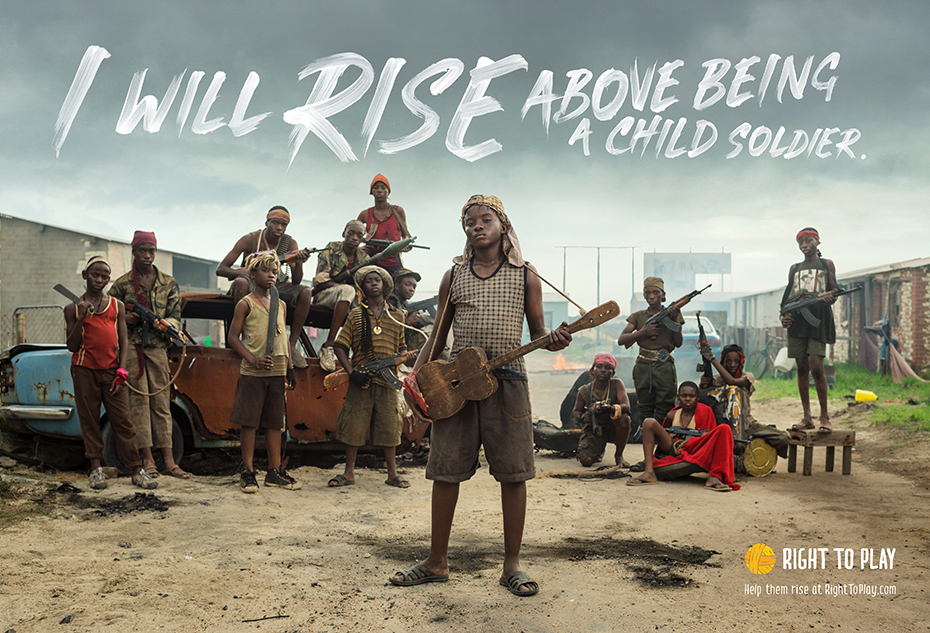UNDER PRESSURE
Building a relationship with your client when it’s your client’s client who’s calling the shots
July 2, 2020
As we look at illustration and photography through the buyer’s lens, we are talking about a client whose world overlaps the vendor’s to a far greater degree than it does the world of the end client. The direct client in this case is an art director or a designer.

Illustration Alicja Kocurek, Client Group Publishing, Agency Illozoo, Project ‘So Loved Bible’, a redesign of the Christian bible which includes works by 15 of the artists in Illozoo’s stable of over 200.
If this was a Venn diagram, the art director/designer bubble and the illustrator/photographer bubble would cover 90% of each other while the end client’s bubble would be somewhere else on the page. Or maybe in the appendix at the back of the book. Because among client/vendor relationships, this one is special. You are both serving a third party whose world may be in the same solar system but in a different orbit. So if you are the illustrator or the photographer the first person you have to make happy is the art director or the designer who hired you. The fact that the end client is on another planet is mostly your direct client’s problem.
Nevertheless, your direct client won’t be happy unless the end client is, so you have to find a way to work together that will make everyone happy, including you. Just like your direct client, your reputation rests on the quality of your work and the fulfilment derived from achieving your creative ambitions. If your relationship with your direct client is problematic or the end client is an indecisive, micromanaging, wannabe art director, it will show up in the work and never make it to your Instagram account. Or your direct client’s.
In her column in this issue (The Art of Buying Art), Ray Creative’s Jenny Smith spoke of the importance of not being an asshole vendor. WILL Creative’s Lisa Lebedovich (Opening the Creative Kimono) spoke about the importance of collaboration and mutual respect between the art director/designer and the illustrator/photographer. Bernice Lo, ACD at Toronto’s GRIP Limited, has worked on accounts ranging from RBC Financial to Aurora Cannabis to Honda Automotive. Says Lo, “I’m a collaborator. I like working together to find new ways to do things but at the same time I trust the people I hire to be the best at what they do. I know there are others who like to take the reins and make sure the outcome matches exactly the vision in their heads, but I am open to the illustrator/photographer’s POV and how things can be better than what’s in my head. If you can’t trust them then why are you hiring them?”

Mark Zibert was particularly suited to this shoot after many years of shooting in African refugee camps, many years of working with Right to Play and several gigs with BBDO. “That experience allowed me to approach this assignment with authenticity, and it created an instant sense of trust among all three parties.” For this Zibert shot both video and stills simultaneously, allowing him to have a hand in the whole campaign. “Having the trust of both BBDO and Right To Play allows us to push things further. Makes a massive difference.”
Photographer, Mark Zibert. Art Director, Anand Iyer. Agency, BBDO Toronto
Greg Oznowich, CD at Cleveland’s Nesnadny and Schwartz, concurs. N&S has a reputation for using fine art and documentary photography in their work. Mark Schwartz, one of the founders, was himself a fine art photographer. The firm’s office is in a very culturally intense district called University Circle, with Case Western University, The Cleveland Orchestra and the Cleveland Art Museum all located within spitting distance. According to Oznowich, “Mark had this wonderful style and we were surrounded by clients who needed that.”
Oznowich continues: “Because of his background, we had a reputation for using fine art photographers and editorial photographers who did thoughtful work. We started to work with all these artists with the caveat that we gave them very little direction.” One of their longest-standing clients is the George Gund Foundation. “The Gund Foundation began working with us in 1990 and they too were fine art photography enthusiasts. Whenever we did a report for them, we hired shooters, gave them a theme, told them what the locations were and that was it. We didn’t give them any more direction than that. We encouraged them to do what they do best.”
When you visit the Gund website, you can see the result of the trust that N&S put in their collaborators. The imagery is achingly beautiful and visually striking, reflecting both a direct client and an end client with an abiding love of the best fine art and documentary photography that money can buy. “Incidentally,” adds Oznowich, “that website essentially functions as the Foundation’s annual report, and just like a printed annual report, it gets redesigned every year.”
They are cranking out videos for $5K a pop and those sell like hotcakes, but they suck.
As with any working relationship, that kind of trust in a particular shooter or illustrator can result in relationships that last for years. Mario Mercier, founder of Montreal’s Compagnie et cie, and former founder of design firm OrangeTango, relies on a handful of practitioners that he’s worked with for decades. “When you always work with the same people there’s a good relationship. Je suis fidèle. I work with Shoot Studio. For example, we have served our client Theatre du Nouveau Monde for 20 years now with the same photographer. There are about 6 or 7 photographers at Shoot that I work with. We have fun and when we have fun the work turns out great. 75% of our business goes to Shoot. And I do most of my work with 3 of the shooters there.”
That may work for creative shops who are in a position to buy original art, but these days with client budgets shrinking while the demand for constantly refreshed content increases, working with original photography or illustration becomes less and less viable. “You need to create so many variations for all the different channels,” says Mercier. “We used to do a photo shoot and net out with a single shot, but social is a gamechanger. The demand for volume is relentless. There are these content shops delivering a ton of quantity but not necessarily quality. Especially with film. They are cranking out videos for $5K a pop and those sell like hotcakes, but they suck.”
So the alternative is to go to the stock sites in search of something ready-made that will solve your problem. That comes with a whole new set of challenges for art directors and designers. Says Bernice Lo, “I would say at least 50% of an art director’s time these days is spent looking for stock photography. Especially for someone like me who is very fussy about what they’re looking for. I don’t want what’s good enough; I spend a lot of time looking for that perfect photo. It’s great at saving the client money but it’s a lot of time spent on my part to find that perfect photo and then when I do the client says well if you can find it in stock then why do we need original?”
One has to wonder about the effect this has on an art director’s productivity. That doesn’t sound like the most effective use of their time. There used to be someone else who did that job. “Twelve years ago when I started there were these people called art buyers, which don’t seem to exist today,” says Lo. “Whenever we needed to hire a photographer or illustrator they would send us curated portfolios to look through. But I can’t remember the last time I worked with an art buyer. The position no longer seems to exist.”
I would say at least 50% of an art director’s time these days is spent looking for stock photography.
She thought it was helpful to have art buyers because they were the experts on who was good at a given task. They had the relationships. They were much more familiar with the huge number of shooters in the country. It was easier for them to think of who to call for a particular task without the art director having to do all that research themselves. It’s time consuming. With budgets shrinking and agencies downsizing this task has now fallen to the AD, which is ironic because while reduced headcount looks good on paper, the savings achieved by firing your art buyer may be cancelled out by the inefficiency of offloading the research onto the AD’s desk. They are going to spend a lot more time looking than the art buyer would have.
Kevin Barclay is creative director at Addison in New York City. He’s a Canadian whose career includes stints at Zulu Alpha Kilo and TAXI Advertising & Design. He agrees that the task of searching out talent has changed quite a bit over the years. Says Barclay, “With platforms like Instagram you can hashtag certain styles. You can literally find the hashtag #corporatephotographer. The work is much more current – sometimes it gets posted the week it’s been published – but the volume is daunting. There’s so much out there to choose from and wade through that one of my greatest fears is missing something.”

Photography Matt Barnes, WestSide Studio, Client FixAuto, Art Director Bernice Lo, Agency GRIP Limited.
That situation is exactly what an art buyer was so good at solving. Barclay continues, ”What I miss most with social is an editor. Someone who can filter the wheat from the chaff. You have this with reps but social is everyone and everybody. If we are shooting a CEO, we go to a stable of ten shooters for that. This is someone who knows how to manage executives, who has a specific look and skill set and we work with our photo producers to seek those people out. But if I need a shot of a wind turbine we can find that in stock.”
Greg Oznowich described a novel approach to efficient search that his firm thought up when they had a client that needed images from around the world. “We did something for Pepsico called the Impact Book. We sought out 20 stories, each 2 pages, focused on sustainability projects they were involved in around the world. They wanted to illustrate it with photography but could not afford to send teams all over the globe so instead we asked for a generous budget for a stock researcher to find the best stock they could. They knew the collections better than we did so we ended up with a body of work that was of National Geographic quality and almost looked as though it had been done by the same artist. Pepsico now has this wonderful album that truly looks like it was commissioned.”
James Sadler, Executive Creative Director at TAXI’s Vancouver office, has a different perspective on the role of the art buyer. He cut his creative teeth at 180 in Amsterdam, and then was recruited to work at TAXI Toronto, followed by a move to the west coast to run the TAXI Vancouver office, where, with the exception of a 5-year hiatus at The & Partnership, he has worked ever since.

Simon Duhamel: “We were hired by Ogilvy Montreal for Fizz, a new internet and mobile service. Every picture produced for this campaign was also filmed and animated into 15 seconds spots. A strategy needed to be put together in order for each scene to live both for stills and motion. The visuals created had to live in various formats since the campaign was mainly web-based. It was a great collaborative experience from the get go. We’ve been working on this campaign for two years now, having produced 30 original visuals since Fizz’s launch.” | Photographer Simon Duhamel Art Director Mathieu Lacombe Agency Ogilvy Montreal
“In Amsterdam,” notes Sadler, “art buyers were very influential. And very highly opinionated. But I think they tended to make the creatives lazy because when I was in Amsterdam the creatives didn’t need their finger in the pulse of who was hot and who was not because the art buyers already knew that. You would go and brief the art buyer and they would come back with a shortlist. Creative got final say but the list had already been created. But I think working without a buyer is better. It forces the teams to stay connected, troll the blogs, and gives them the chance to enjoy the thrill of finding the next new shooter or illustrator.”
Besides the art buyer, the other expert creatives have traditionally relied on to find the right talent is the rep. While the internet has thinned their ranks, the ones who are still in business continue to provide value. Mohamed Danawi is a transplanted Canadian working out of Savannah, Georgia, where he’s been for the past 23 years. His company Illozoo represents over 200 illustrators from around the world. Business is booming. “I think we’re having a renaissance in illustration,” he says. “More visual communication, not just drawing and painting anymore, but infographics, graphic design, concept art for gaming, motion. Now it’s a multimedia way of communicating. Illustration’s becoming a more popular choice among students – there are so many avenues, venues and platforms they can choose to pursue. Game design, storyboarding, concept art, advertising, packaging. On social media you see more illustrators showing their work, some gaining popularity very quickly because they have access to lots of fans and the fans become the influencers who extend their popularity.”
As with any working relationship, the trust in an artist can result in relationships that last for years.
We asked if that was good for his business or not. “Very good,” he claims. “We don’t only rep but manage the project. For example we are working on Expo 2020 in Dubai with a team of 14 illustrators in Italy, Spain, France and the US. They want us to manage and organize the whole effort. For our artists, they can go after their own clients, but we have at our disposal a large variety of talent all over the world.”
One of the industries that is buying more and more illustration is, of all things, textbook publishing. Since our culture is so much more visual, educators are taking note and shifting the balance towards more visual and less verbal content. Says Danawi, “The expectation is for a lot more visual communication as a form of learning. All these publishing houses are assigning a lot of illustrations to aid in the teaching of everything – science, math, history. Learning is just much more visually oriented than it used to be.”
While Danawi is experiencing what he calls a “renaissance” for illustrators, there’s no question photography is still the default choice for most clients. Addison’s Kevin Barclay agrees with the latter but not the former. Says Barclay, “I find illustration has not changed in all these years but the fact that everyone has a camera in their pocket has changed photography significantly. It’s far more ubiquitous and available. However there’s not an explosion of illustration styles and I’m a bit surprised that this scarcity has not created more of a premium on illustration. I would have guessed that we would be seeing a revival of the 50s approach of using more illustration than photography.”
I’m a collaborator. I like working together with photographers and illustrators to find new ways to do things.
Sounds like Kevin’s never met Mohamed. Or maybe he doesn’t have any clients in the textbook business.
One thing he is certain about is that he does not envy photographers in the current environment. “Photography is everywhere and it’s a global market. There’s just so much out there. My hat’s off to any photographer right now. I haven’t got that kind of courage.”
There’s one thing everyone agrees on: client pressures are making their lives far more difficult. They say success is determined by how well you serve your client’s clients. But if your client’s client is demanding more and more, faster and faster for less and less, how long before you or your direct client snap? by Will Novosedlik
This story originally appeared in Applied Arts magazine. To subscribe, for just $29.99 a year, click here.







